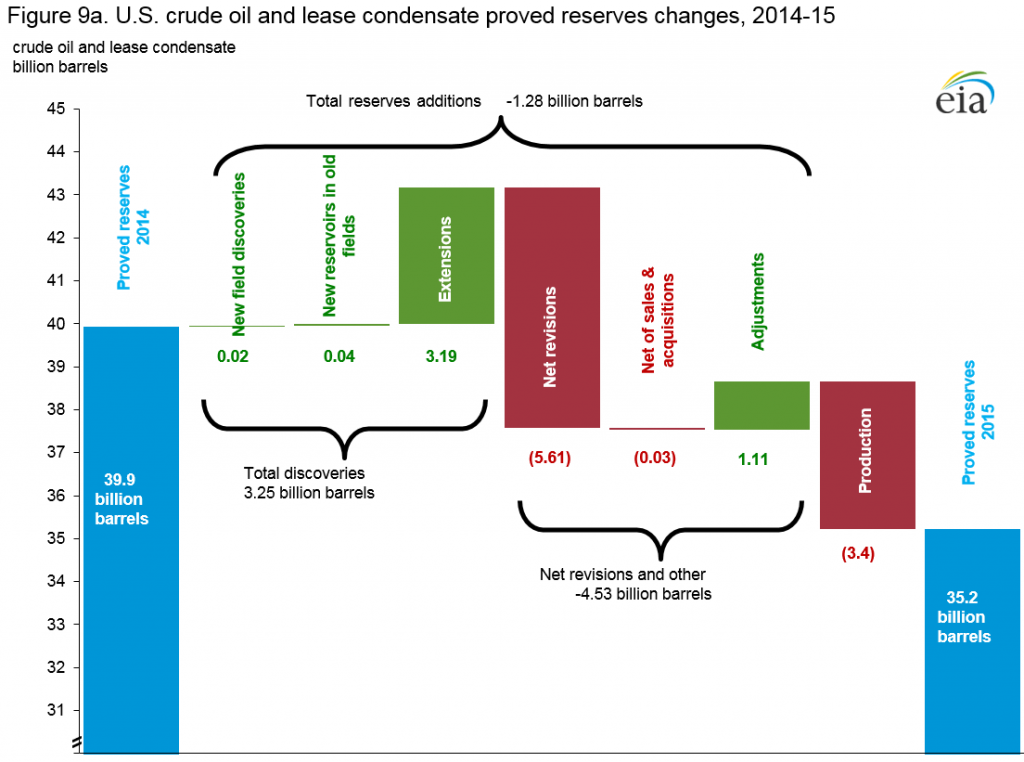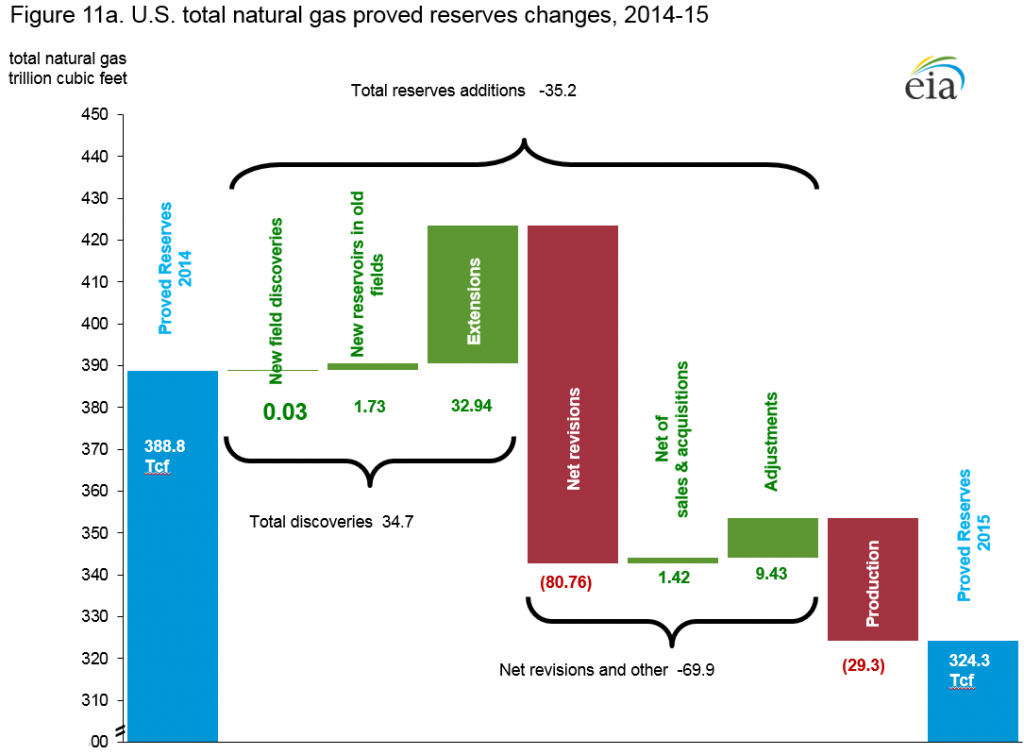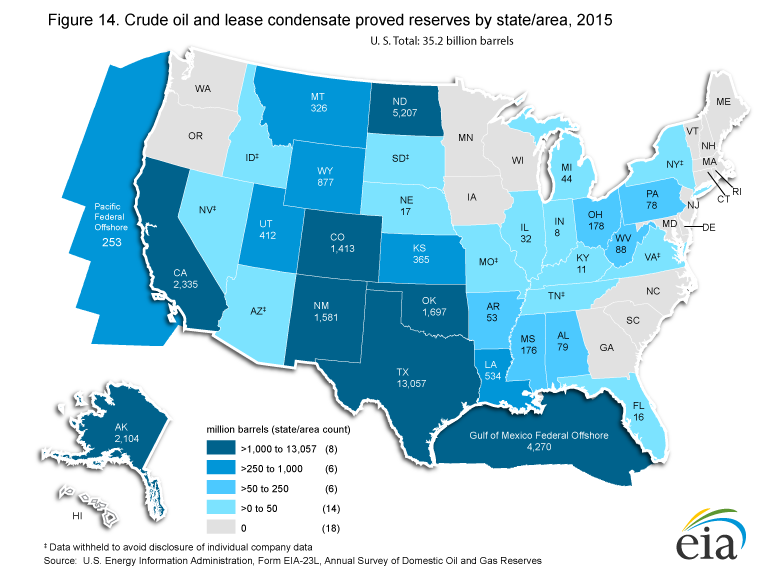Proved oil and gas reserves down 11.8% and 16.6%, respectively, from year-end 2014
EIA has downgraded its estimates of proved oil and gas reserves in the U.S., according to its Crude Oil and Natural Gas Proved Reserves, Year-end 2015 report, released today.
Proved reserves of crude oil in the U.S. declined by 4.7 billion barrels or 11.8% from their year-end 2014 level to 35.2 BBbls at year-end 2015. Natural gas proved reserves decreased 64.5 Tcf to 324.3 Tcf, a 16.6% decline.
Average oil and gas prices in 2015 dropped 47% and 42%, respectively, from 2014, resulting in more challenging economic and operating conditions. This caused operators to postpone or cancel development plans and revise their proved reserves downward.
Discoveries and revisions
Proved reserves are volumes of oil and natural gas that geological and engineering data demonstrate with reasonable certainty to be recoverable in future years from known reservoirs under existing economic and operating conditions.
The charts below break down the different additions and revisions contributed to the changes.
Total discoveries of crude oil kept pace with reserve decreases from production, with 150 million more barrels of crude and lease condensate produced than were found.
Discoveries are defined as new fields or reservoirs in previously discovered fields. Extensions are additions to reserves that resulted from additional drilling and exploration in previously discovered reservoirs. In a given year, extensions are typically the largest percentage of total additions while discoveries are usually a small percentage of annual reserve additions.
Revisions primarily occur when operators change their estimates of what they will be able to produce from the properties they operate in response to changing prices or improvements in technology.
Natural gas extensions and discoveries grew faster than production by 5.4 Tcf.
Plenty of oil still being found
New Mexico had the largest net increase in proved reserves of crude oil and lease condensate of all states in 2015. This was due to development of the Wolfcamp shale and Bone Spring plays in southeastern New Mexico’s portion of the Delaware Basin.
Texas and North Dakota, the epicenters of current U.S. onshore crude production, saw the highest crude oil and lease condensate extensions to existing fields. Downward revisions in both states resulted in a net reduction in proved reserves.
Ohio added more than 5 Tcf of natural gas proved reserves in 2015, as a result of activity in the Utica/Point Pleasant Shale play. The state is now the ninth-largest natural gas reserves state and surpassing Arkansas and the Gulf of Mexico.











